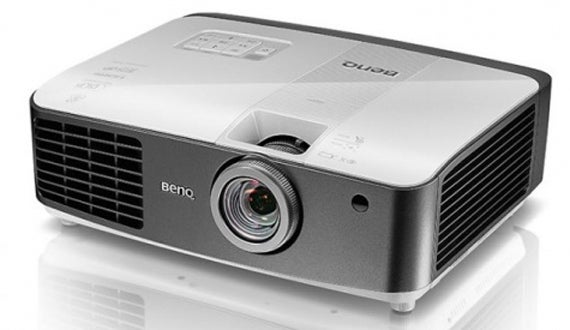BenQ W1500 Review
BenQ W1500
This BenQ mid-ranger is OK with 2D, but its 3D is just plain weird. Find out why...

Sections
- Page 1 BenQ W1500 Review
- Page 2 Features and Performance Review
- Page 3 Performance and Conclusion Review
Verdict
Pros
- Excellent motion handling
- Good colour performance
- Decent wireless video system
Cons
- Black level response could be better
- Rather limited zoom and vertical image shift
- Weird 3D
Key Specifications
- Review Price: £1400.00
What is the BenQ W1500?
The W1500 is an unusually ambitious DLP projector by BenQ’s recent standards, providing 3D playback, wireless HDMI playback, ISF-certified calibration tools and hopefully superior picture quality to its recently tested BenQ W1080ST and BenQ W1070 models for a £1400 price tag.
Aesthetically the W1500 looks surprisingly similar to its cheaper siblings, with a glossy white finish and passably stylish sculpting. The main difference is that the W1500 is a bit bigger, reflecting – we presume – its use of a higher-grade optical engine.
Key Features: Full HD single-chip DLP projector; 3D playback with triple flash system; 2200 Lumens max light output; Wireless HDMI system included; ISF certified
BenQ W1500 – Design
While the W1500 is passably attractive, though, we’d be lying if we didn’t say that some aspects of its design – in particular the rather plasticky and awkward design of the lens section and the appearance of fans immediately behind open grilles on the projector’s sides – had us feeling a bit concerned about its performance potential.
These concerns are underlined, moreover, while trying to set the projector up. Our attempts to mount the projector on the usual stand behind our test room ‘sofa’ were instantly scuppered by a combination of the surprisingly short-throw nature of the W1500’s lens, its somewhat disappointing amount of optical zoom support, and the aggravatingly limited amount of vertical image shifting supported by a little wheel arrangement tucked under a flap above the lens barrel.
Obviously any amount of vertical image shifting will reduce the likelihood of you having to distort your pictures by applying digital keystone correction to them. But we’d have expected a bit more vertical shifting range on a £1400 projector.
BenQ W1500 – Connections
The projector’s rear holds a very presentable suite of connections. Two HDMIs provide both 2D and 3D digital connection, and there’s a component video port, a D-Sub PC port, an RS-232 port, an S-Video port, a composite video port, and even an audio line input to reflect the fact that the projector carries a built-in 2 x 10W speaker system (should you not mind listening to sound that’s appearing from somewhere other than the screen it’s supposed to be coming from!).
As usual with BenQ, the projector system at the W1500’s heart is a single-chip DLP affair, delivering a high claimed maximum brightness of 2200 ANSI Lumens and a fair to middling claimed contrast ratio of 10,000:1. Colour comes courtesy of a 6-segment colour wheel that should produce better colour depth and range than colour wheels with fewer segments.
 Lamp life is quoted at between 3000 and a very respectable 6000 hours (depending on what lamp setting you use), while running noise is quoted at a respectable – though certainly not groundbreaking – 33dB or 28dB, again depending on which lamp output setting you’ve got selected.
Lamp life is quoted at between 3000 and a very respectable 6000 hours (depending on what lamp setting you use), while running noise is quoted at a respectable – though certainly not groundbreaking – 33dB or 28dB, again depending on which lamp output setting you’ve got selected.
BenQ W1500 – Wireless HDMI
The W1500 is one of a growing number of projectors to support wireless HDMI, whereby it can receive full HD video signals without the need for a cabled connection. Provided it works well, this is a really handy feature given the long cable runs usually needed for connecting sources to a projector.
The necessary transmitter for the wireless HDMI is included free with the projector – as is one free pair of BenQ’s 144Hz active shutter 3D glasses. The projector’s 3D transmitter is built into its chassis.

